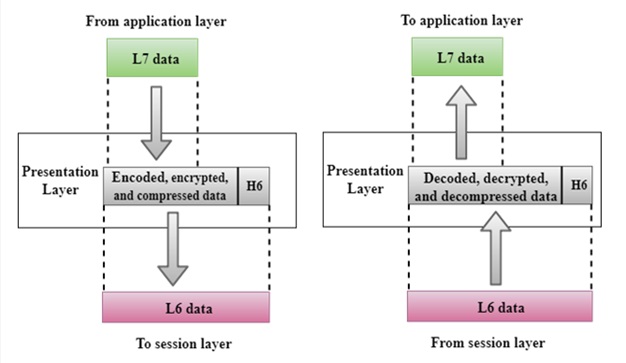Home »
Computer Network
Presentation Layer: What It Is, Design Issues, Functionalities
Description and Functions of Presentation Layer in the OSI model: In this tutorial, we are going to learn what the Presentation layer is and the Functions of the Presentation Layer in the OSI model in Computer Networking. We will also discuss the Design issues with the Presentation Layer and the working of the Presentation Layer with the help of its diagram.
By Monika Jha Last updated : May 05, 2023
What is Presentation Layer?
The Presentation Layer is concerned with the syntax and semantics of the information exchanged between two communicating devices.
- The presentation layer takes care that the data is sent in that way the receiver of the data will understand the information (data) and will be able to use the data.
- Languages that are syntax can be different from the two communicating machines. In this condition, the presentation layer plays the role of translator between them.
- It is possible for two machines to communicate with different data representations, data structures to be exchanged can be defined in an abstract way.
- These abstract data structures will be managed by the presentation layer and this layer allows higher-level data structures (For example banking records), to be defined and exchanged.
This figure shows the relationship of the presentation layer to the session layer and application layer.

Design Issues with Presentation Layer
The following are the design issues with presentation layer:
- To manage and maintain the Syntax and Semantics of the information transmitted.
- Encoding data in a standard agreed-upon way just like a string, double, date, etc.
- It Performs Standard Encoding scheme on the wire.
Functionalities of the Presentation Layer
Specific functionalities of the presentation layer are as follows:
1. Translation
- The processes or running programs in two machines are usually exchanging the information in the form of numbers, character strings and so on before being transmitted. The information should be changed to bitstreams because different computers use different encoding schemes.
- The Presentation layer is responsible for compatibility between these encoding methods.
- The Presentation layer at the sender's side changes the information from its sender dependent format.
- The Presentation layer at the receiving machine changes the common format into its receivers dependent format.
Example: Convert ASCII code to EBCDIC code.
2. Encryption
- The system must be able to assure privacy regarding the message or information as it also carries sensitive information.
- Encryption means that the sender transforms the original information or message to another form, this data after encryption is known as the ciphertext and this ciphertext sends the resulting message out over the network.
- Decryption concerned with the transform of the message back to its original form. This decrypted data is known as plain text.
3. Compression
- Data Compression means reduces the number of bits to be transmitted by this reduce the bandwidth of the data.
- Data Compression becomes particularly important in the transmission of multimedia such as audio, video, text, etc.
Advertisement
Advertisement